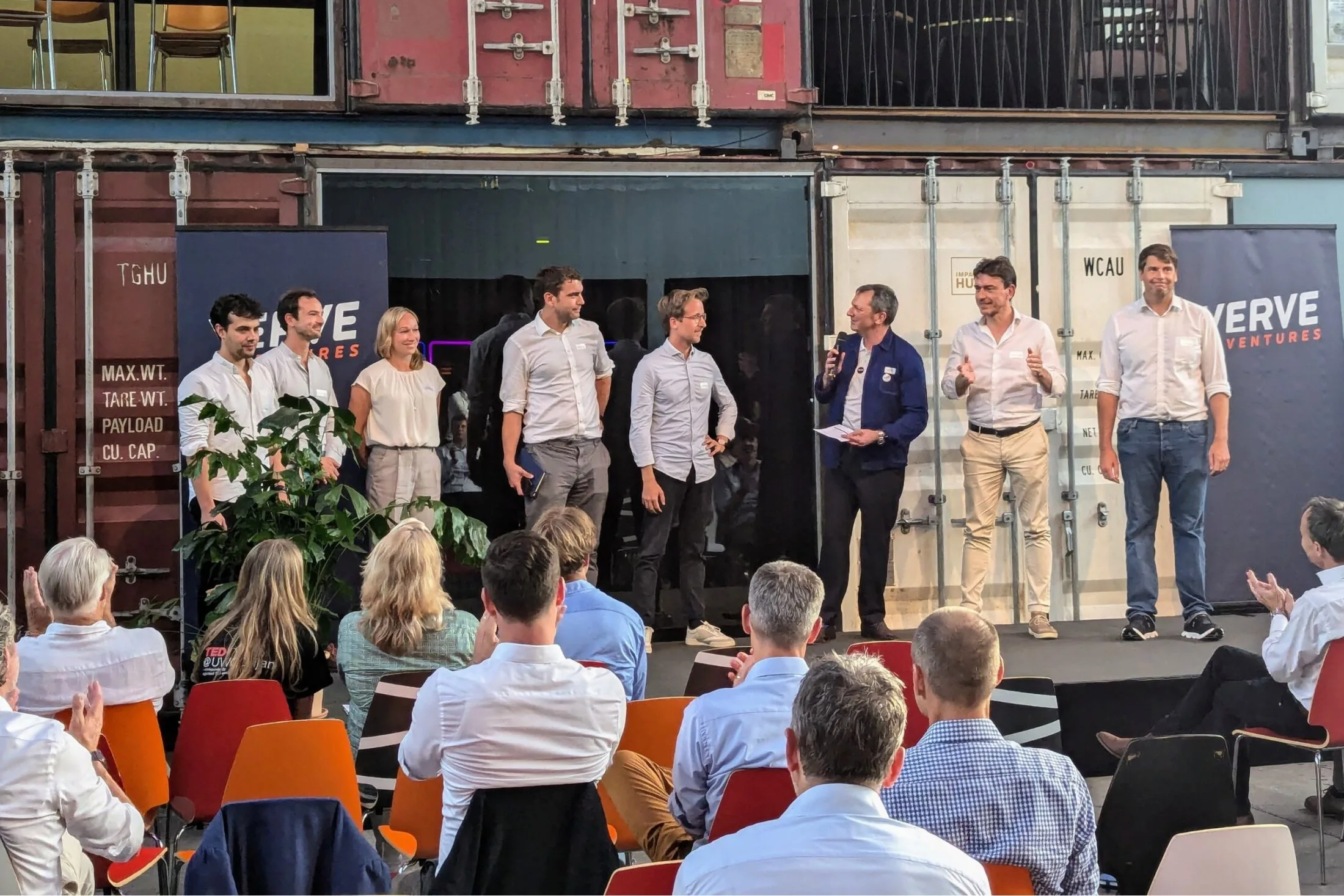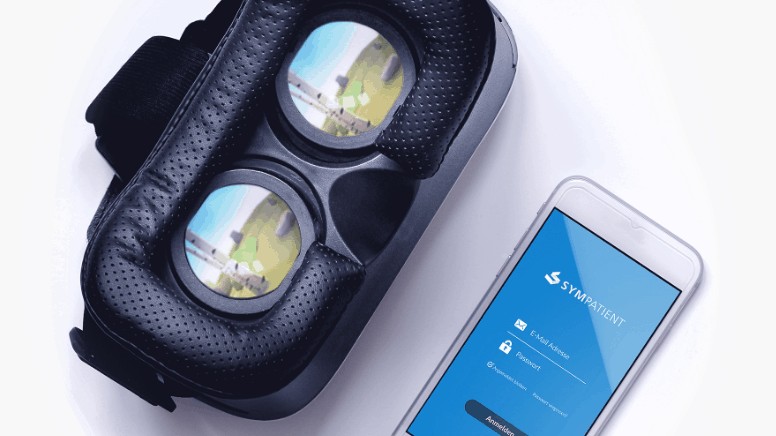When Dr. Josep Sola and Dr. Mattia Bertschi began working together as researchers at the Swiss Center for Electronics and Microtechnology (CSEM) in 2004, they only had an inkling of the paradigm shift in healthcare and health tech they would soon drive.


Hypertension (elevated blood pressure) is a major risk factor responsible for more than 10 million deaths annually, with associated costs of USD 50 billion in the US alone. The way it is measured with an inflatable cuff was invented more than 100 years ago – a method familiar enough you’d think it would have been rendered obsolete by now.
Dr. Josep Sola and Dr. Mattia Bertschi wanted to find new ways to diagnose and treat hypertensive patients. They’ve spent fifteen years researching how to understand the language of heart signals and decode key markers to gather insight into blood pressure.
Over time at CSEM, Josep and Mattia realized that their research and technology had far more potential than anyone had previously considered, and that in the field of medical devices much more attention could be paid to reducing friction in patient experience. Instead of simply licensing the technology to a larger medical device firm, they decided to create their own sleek, wearable product.
The company is currently developing its own medical wearable device, which will address a market of over 1,7 billion adults with hypertension. Aktiia’s device, which patients wear comfortably on their wrists, translates inputs from standard optical sensors into accurate measurements that are recorded on all day and all night. Patients, and the doctors and clinicians who treat them receive more complete around the clock measurements of their blood pressure activity, as opposed to the sporadic data snapshots they were receiving before.
We sat down with Josep to learn more about what led him and his co-founder Mattia to become researchers and later entrepreneurs and wearable medical device pioneers.
What initially led you and Mattia to pursue hypertension as your research focus at CSEM?
Mattia and I both come from families with people who are hypertensive. This topic was on both of our minds subconsciously since the beginning. We also both came from the field of signal processing. When we started working together, people were using optical signals and sensor technology to measure parameters like heart rate and sleep. What was available at that time was mainly the optical sensors that we could use to measure certain signals. This technology was pretty new, and no one had really taken the time to analyze the information we could get out of these signals and the potential of it. So we started investigating and looking at these optical signals from all different angles. We wondered whether you could use these same types of sensors for something that is useful to people like our families. That’s why we decided to explore whether we could use these optical sensors we had in the CSEM to change the way how blood pressure is measured.
Can you describe the process of going from this innovative concept to actual implementation and the design of Aktiia’s product?
What we had to do – and where we invested most of our time – was to collect valuable annotated data sets. We collected optical signals, together with reference signals, from newly developed sensors we could insert into the arteries of human patients and animals. We spent about ten years doing research with our new, invasive sensors placed into the arteries of animals and other patients so that we could see how to translate these optical signals. Although the idea sounds pretty easy – taking an optical signal and relating it to blood pressure – it requires a large amount of annotated data. In this sense, we were lucky to be in the Swiss environment. We had access to a lot of public funds to cycle through different research projects where we could acquire this data and process it. We spent a lot of time doing things that didn’t end with positive results. Having the funds to continue with our research helped us manage to finally identify the piece of code that works.
Let’s follow that thread for a moment. What made CSEM, as well as the ecosystem surrounding it in Switzerland, the right place for you and your co-founder?
The Swiss environment is very well designed for long term research. We started at CSEM in 2004 doing research on this particular use of optical sensors for the measurement of blood pressure. I was on the team starting this research before I did my PhD later on the same topic. Being here allowed us to make use of public funds and have access to research clinics, like the university hospitals in Lausanne, Bern and Zurich. This also helped us to find a very precise industry goal. I think this type of environment is hard to find anywhere else in the world.
As academic researchers initially, what drew you to founding a startup as opposed to other options you may have had at the time?
By 2017, we already had the clinical evidence and our technology was maturing. What we had in our hands was a way to measure blood pressure without having to inflate a cuff on a patient’s arm or wrist. We really believed this had the potential to disrupt the way hypertension is diagnosed and managed, and that medical device companies weren’t catching on to the potential like we were, and as such, we wanted to get this into the pipeline of product development. However, the industry mindset at the time was based on old hypotheses of how to put devices in the hands of patients, themselves based on old rules of medicine. We didn’t want our technology to be integrated into the sub-product of a big brand some years down the line. This deserved something better. So we decided to form a company that would really let the idea take off.
When you were creating the product, how important was design for you?
It was extremely important. Before we founded the startup, we looked into potential buyers for this technology, and they were all medical device companies that were mainly driven by clinicians and doctors. In our opinion, these companies didn’t put enough focus on the comfort of the patient, about design, about friction on the use of the device in the long term. They cared more about whether the clinician would be able to use the data from a device. This was not the driver of our technology. We wanted to create a product that was first a cool wearable that you would want to wear in daily life, as opposed to the old paradigm of being a medical device first. We believed this would lead to even more valuable data for the clinician in the long run anyway. As a startup, we could put design first in ways we couldn’t if we were plugging our technology into a medical device made by another company.
You’ve already achieved going from sporadic blood pressure measurement to around the clock daily measurement, which is a huge change. What else is changing?
The big shift has been in how medical devices are perceived and used. Before Aktiia, medical devices for in-hospital use were mostly designed to be good for clinicians to receive vital signals. There wasn’t as much care for how the users would perceive the devices. To get more thorough readings from hypertensive patients over time, patients used to have to sit down every morning for ten minutes and measure their blood pressure using a cuff. People wouldn’t want to use the devices that were already out there. Around 2004 to 2005, the first commercially available wearables appeared. These were the FitBit and Garmin, and later things like the Apple Watch. All of a sudden there was this big group of wearable devices that were only measuring things that didn’t matter for clinicians, like number of steps or hours of sleep. These are measurements that are nice to have, but they don’t really have much healthcare value. Our achievement is that we created a new family of wearable devices that are better suited for daily use and measure what really matters.
Along with the wearable device, you also have an independent and robust data repository. Why is it important?
With the old paradigm of blood pressure measurement, you used to take measurements once every year, or once every two years. You’d have systolic or diastolic measurements, so one or two numbers that were easy to analyze. We now know that blood pressure is always changing. Getting a snapshot measurement isn’t enough. We are shifting to this new paradigm where we can actually measure continuously. This means that we’re getting a much larger amount of information. We can measure the blood pressure throughout someone’s entire life. We receive tens of thousands of data points from each patient per year. We’re acquiring all this data in our data repository and applying data science techniques to extract numbers that summarize all the measurements, which is helping clinicians make the best decisions for their patients by giving them a high-level overview.
What have you learned about developing software and hardware in parallel?
Everything is about people. A year and three months ago, there were only the two of us. Today we are seventeen. We brought people with unique backgrounds in mechanics, electronics, software, data science and more on board. But our main hiring criterium was not only background, it was personal attitude. We have worked like hell and we’re still working like hell. What’s made it easier has been the attitude of all the people who work together with us.
What do you bring to medicine and healthcare, and what makes this level of innovation important?
When it comes to how you measure, diagnose and treat patients outside of the hospital, there’s very little that has come out of the traditional industry for at least the last decade. Where we think there is a paradigm shift, and where we as start-ups can be disruptive and innovative, is in creating a new category of medical devices designed for people to use at home. We think that there is a huge potential for innovation outside of clinics. As the population gets older, we need ways to track people and to better treat them outside of clinics and hospitals. By starting with a product that’s designed for this particular purpose, integrating all the knowledge of medical devices, but for outside the clinic, we’re really disrupting healthcare.
You’re moving toward FDA approval now, so what challenges do you see ahead, as well as opportunities for Aktiia?
In the very short term, we are preparing all the technical documentation for the FDA clearance and CE mark. The real challenge for us now is market penetration. We want people to start using the device, so the challenge will be in convincing people to use it. So we need to convince the clinical community. Our advisors are European and US leaders in the hypertension space who already believe in what we’re doing, and they are advocating for us in the clinician community. We have to make sure that every general practitioner understands that by adopting Aktiia’s new type of tool, they will be able to better diagnose and treat their patients with hypertension. This is challenging because they have their way of working. Making changes will require a lot of energy and mutual discussion. It’s been a lifetime of work.
Written by
Investors

Our sophisticated investors include visionary family offices, leading wealth managers, institutions, founders, and senior executives. These individuals and organizations are all committed to shaping the next generation of innovation.
More News
The Start of a VC Journey
Let me take you through my journey to becoming a Visiting Analyst at Verve Ventures. I’m currently in the middle of my 6 months stay here, so I’ll focus on my questions before joining a venture capital fund, how I got in, and how it’s been so far.
Digital Health: Startups and Listed Equities
Digital health is a topic that is gathering traction, both in the world of startups and listed equities. But what do companies in this field do? And what problems do they struggle with? This interview with two experts shows how technology changes the health sector.
A world premiere in digital health
On the 29th of January 2020, the biggest German health insurance announced the launch of a novel anxiety therapy: Invirto. This premiere is a major milestone for the digital therapeutics startup Sympatient which is developing Invirto. Sympatient’s co-founder and managing director Christian Angern explains how this all came about.


